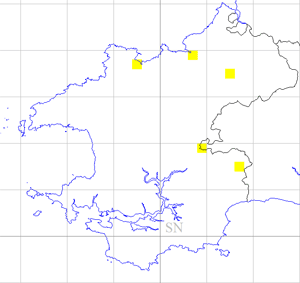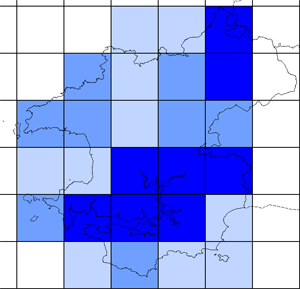Winter visitor and scarce breeder
The Snipe was a widespread breeding species in Pembrokeshire throughout the times of Mathew (1894) and Lockley et al. (1949) but Saunders (1976) remarked that there were few modern breeding records. The Breeding Birds Survey of 1984-1988 found only about ten pairs on the bogs of the Preseli Mountains, with possible breeding in the meadows around the confluence of the rivers Syfynwy and Eastern Cleddau. Extensive land reclamation, drainage and reduced grazing of commons has undoubtedly been the cause of the drastic decline in the Pembrokeshire breeding population, and an increase in foxes and corvids has probably placed further pressure on the remaining population.
The small numbers of Snipe that arrive between July and September may be birds that breed fairly locally, perhaps elsewhere in Wales or other parts of Britain. The main arrival is in October, with ringing recoveries showing that they come from at least as far away as Finland. Small groups are scattered widely across the county during the winter, having the ability to suddenly concentrate at places where ground conditions become temporarily favourable, in which case groups of 50-100 are not unusual. They move to soft areas, such as the foreshore and springs, when the ground becomes frozen. Numbers diminish steadily if hard weather is prolonged, many presumably leaving the county altogether.
The spring departure is mainly in March but stragglers, or possibly through migrants, are noted in April and May. Largely nocturnal migrants, they have been seen at Strumble Head, South Bishop and the Smalls at lighthouse attractions.

Fieldwork 1984-88 (based on 478 tetrads)
Orange = breeding probable = 3
Yellow = breeding possible = 6
Total tetrads in which registered = 9 (1.9%)
Donovan J.W. & Rees G.H (1994), Birds of Pembrokeshire
 Wednesday, September 25, 2013 at 5:42PM
Wednesday, September 25, 2013 at 5:42PM 





